Simple Marinara Sauce

jump toRECIPE
This marinara is cooked quickly, just enough time so the tomatoes break down in the sauce while showcasing the bright tomato flavor. I recommend you double the recipe and store batches for easy weeknight dinners. This marinara sauce can be used as a building block to numerous recipes, just use as you would any jarred or store-bought marinara sauce. Store-bought can have lots of sugar or additives. They work in a pinch but I prefer homemade sauce when I have a choice.
Classic Italian marinara is made without onions, I sweat them in olive oil to add a savory, slightly sweet element to the sauce. This sauce is naturally gluten-free, dairy-free, and vegan. I prefer to purée half the sauce for a smoother, more uniform texture though you can simply simmer the sauce and use it as needed.
Simple Marinara Sauce Recipe
Table of contents
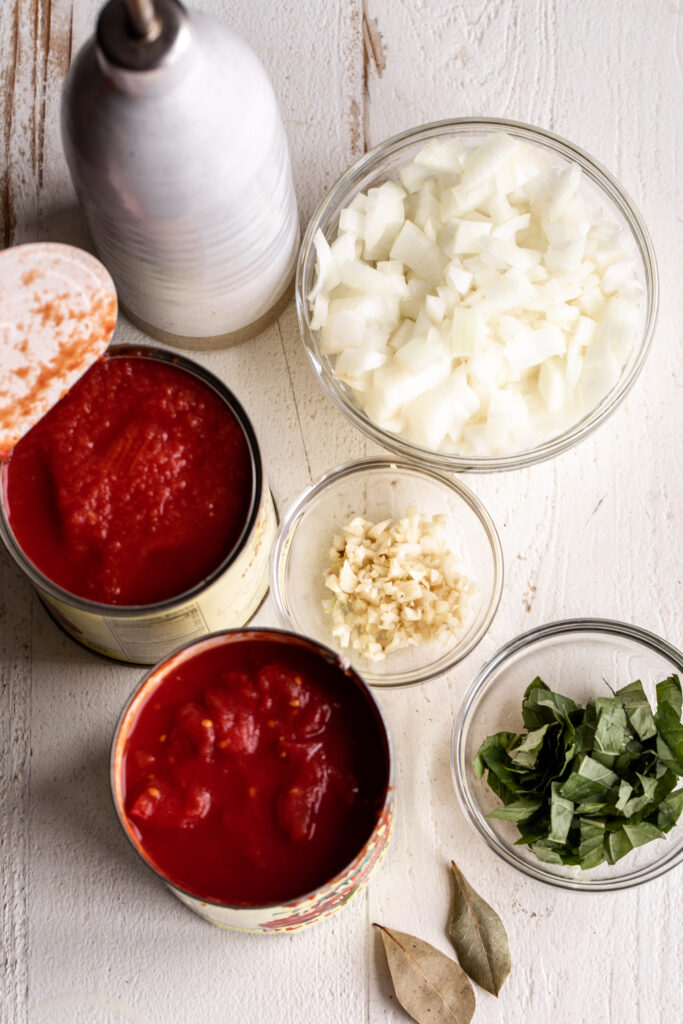
Key Ingredients in This Recipe
- Whole Peeled Tomatoes – Canned whole peeled tomatoes are extremely versatile. The tomatoes are picked when they are ripe then cooked, peeled, canned and packed in tomato juice or puree. They have a rich tomato flavor perfect for tomato sauces.
- Diced tomatoes – Like canned whole peeled tomatoes, diced tomatoes are cooked and peeled. They break down more uniformly into sauces so I choose to use half whole tomatoes and half diced rather than crushed tomatoes for this recipe.
- Fresh basil – I add a few leaves of sweet basil (the bright-green type with cup-shape leaves and most readily available in grocery stores) to complement the fresh elements of the sauce.
- Bay leaf – Aromatic whole bay leaves add depth of flavor to the tomato sauce and are removed before use.
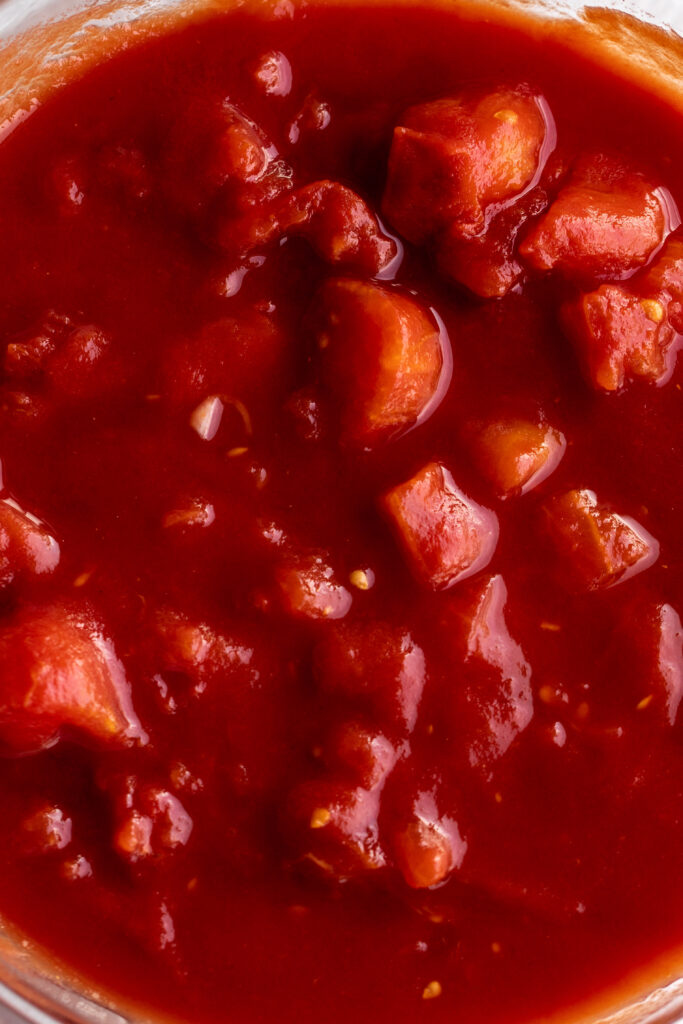
Instructions to Make Marinara
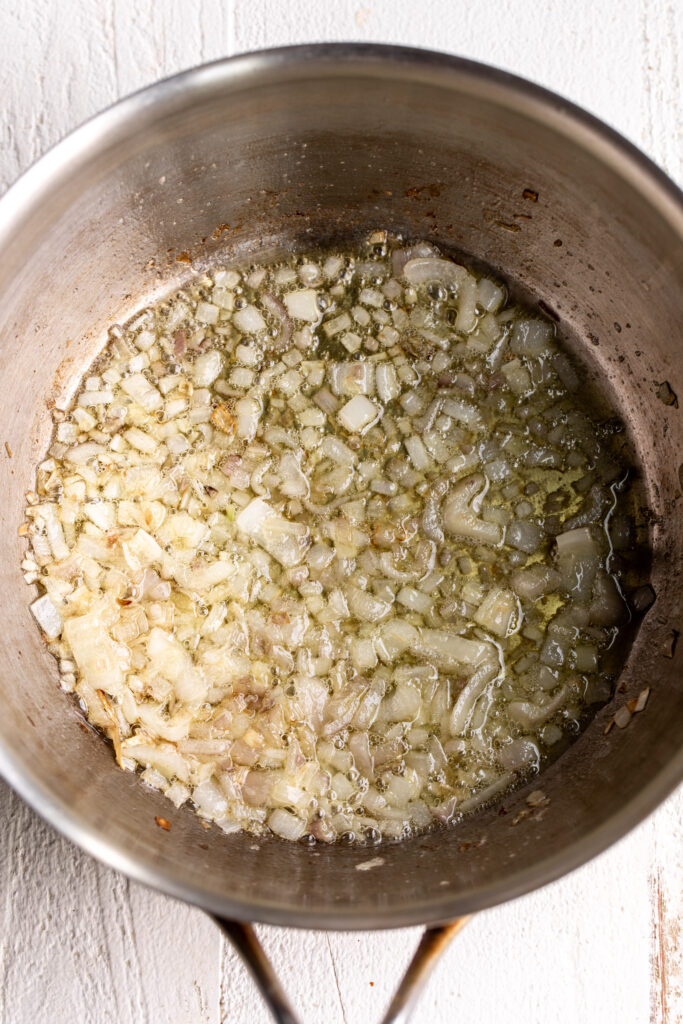
Step 1: Sauté onions.
Heat the olive oil in a large pot over medium heat. Add the onion and sauté, cooking until the onion is tender and translucent about 6 minutes.
Step 2: Sauté garlic.
Add the garlic and sauté until fragrant, about an additional 30 seconds.
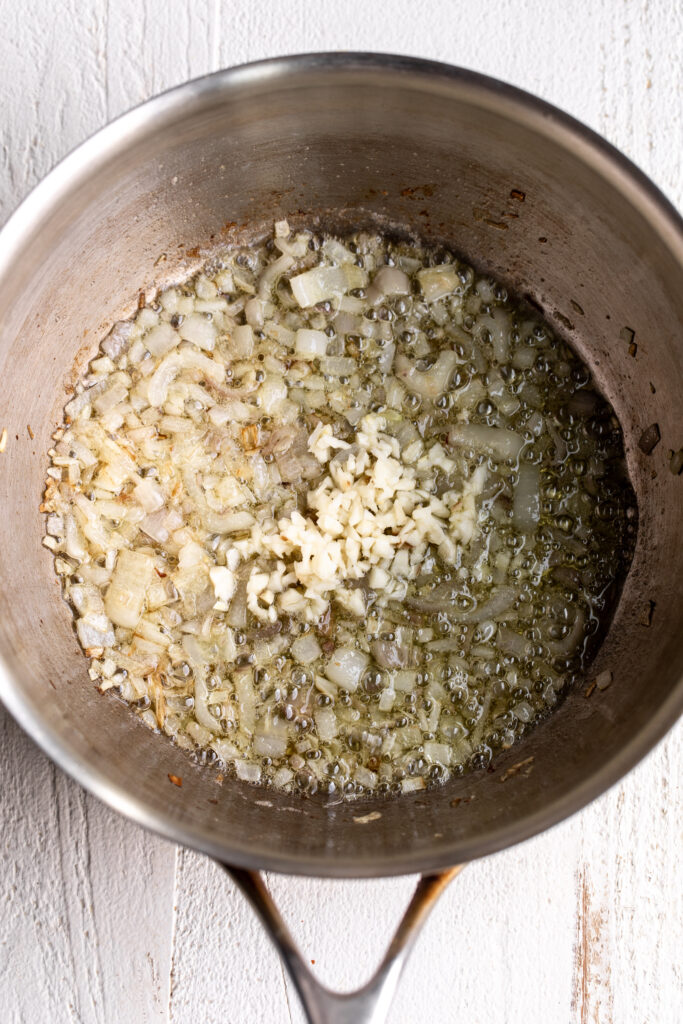
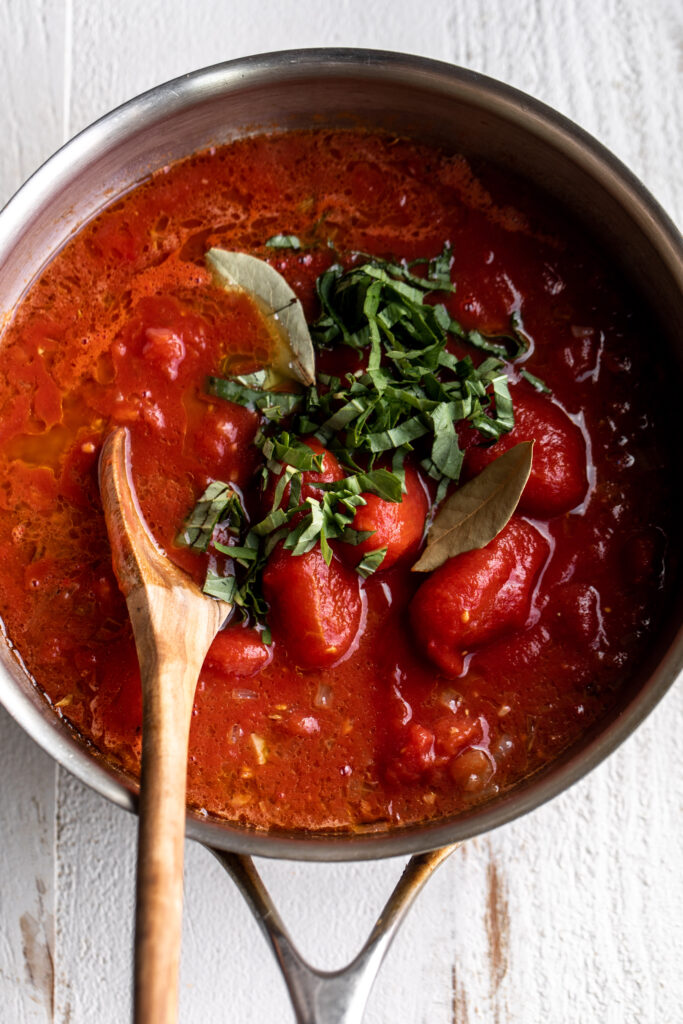
Step 3: Add remaining ingredients.
Add the tomatoes with their liquid, bay leaves, basil and ½ cup of water.
Step 4: Simmer sauce.
Lower the heat to medium-low, let simmer, and stir occasionally until the sauce thickens about 30 minutes. Discard bay leaves and season to taste with salt and pepper.
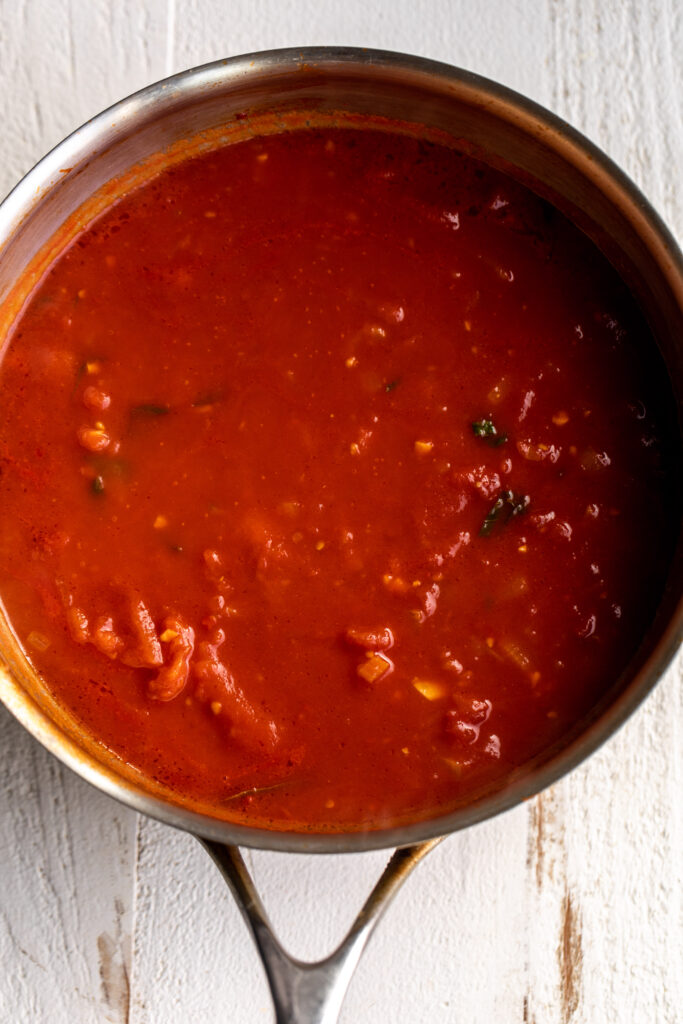
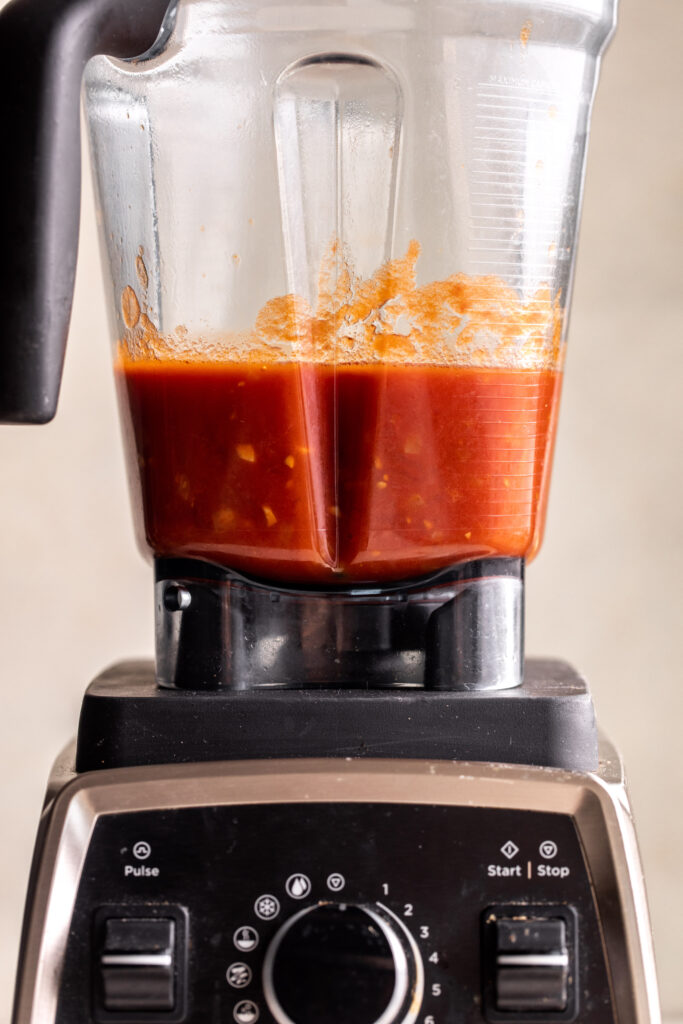
Step 5: Blend (optional)
Serve as is or if you prefer a smoother sauce, take about 3 cups of the sauce, let it cool slightly then add to a blender. Pulse until smooth, about 30 seconds. Stir it back in with the rest of the sauce.
Step 6: Serve
Store the sauce refrigerated in an airtight container for up to 1 week, frozen or serve.
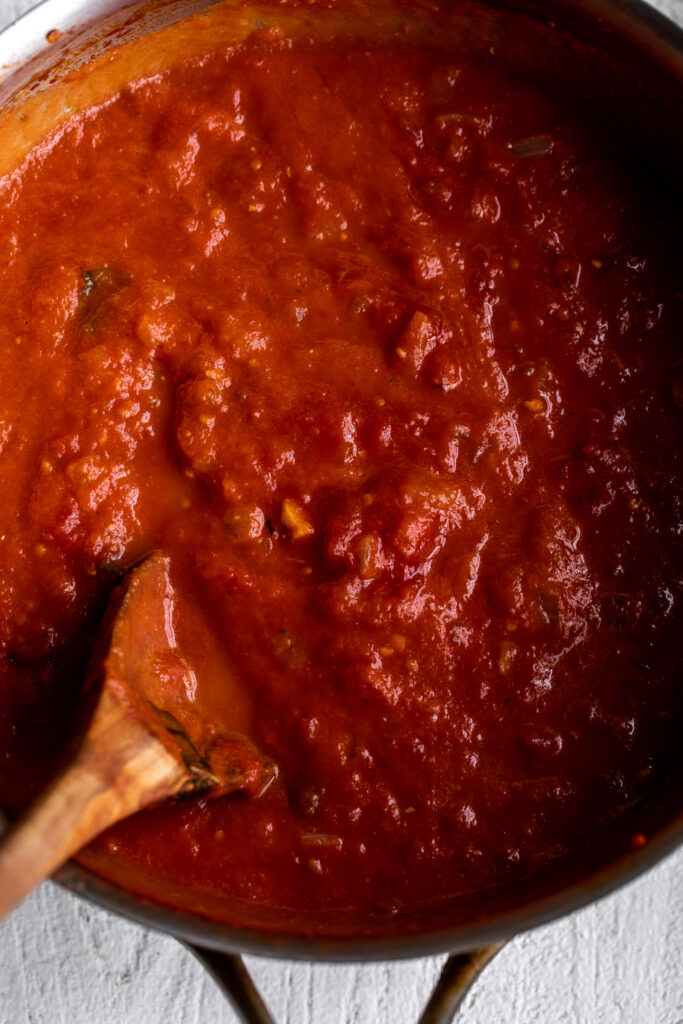
Marinara vs. Tomato Sauce
Marinara is a specific type of tomato sauce often used to colloquially describe a red sauce or tomato sauce served on spaghetti. It can be a tomato sauce, but not all tomato sauces are marinara. Marinara is cooked quickly in comparison to other long-simmered sauces so the bright, fresh tomato flavor can still shine through. While it is often made with few additives, I add some sautéed onion and garlic as well as fresh herbs to my marinara. What is referred to as “spaghetti sauce” may be marinara with the addition of more vegetables or meat.
Best Tomatoes for Marinara
While fresh tomatoes are great for some sauces I much prefer canned tomatoes for marinara. San Marzano is a variety of plum tomatoes, considered the gold standard for their balanced flavor and sweetness. San Marzano tomatoes are subject to forgery or deceptive marketing practices – especially now that they can be grown outside Italy.
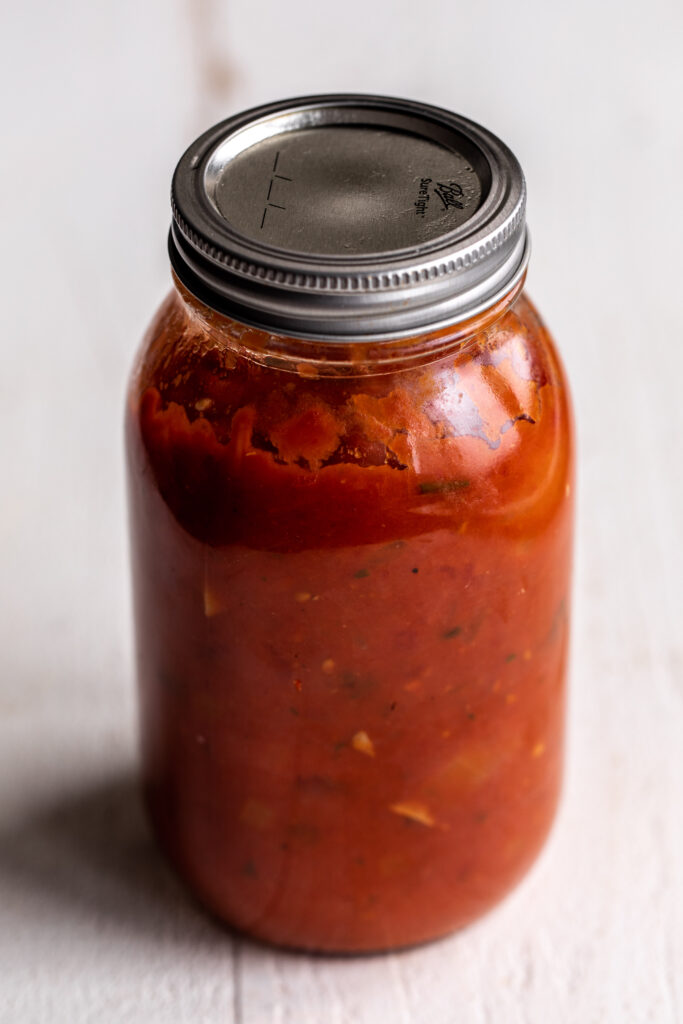
What Is Marinara Sauce Used For
Pasta
Marinara is a great simple pasta sauce that can be served over your favorite pasta shape. Serve alone or serve with meatballs like these Beef, Pork & Prosciutto Italian Meatballs or over chicken cutlets in this Chicken Parmesan with Marinara recipe. It’s perfect over a baked pasta like manicotti.
Pizza
Marinara is a great easy pizza sauce. Use as is or puree the sauce so it’s smoother. Simply spread it around the crust and add desired toppings. One of my favorite pizzas is serving marinara topped with a little grated Parmesan cheese and finishing it with cold burrata just before serving. It’s also perfect on this Chicago Deep Dish Style Pizza!
Sandwiches/Subs
Ladle warmed marinara over a chicken cutlet sandwich with melted mozzarella or my personal favorite, a Meatball Sub Sandwich.
Appetizers
Marinara makes a great dipping sauce for Mozzarella in Carrozza or arancini. Try using it as the base of this Baked Goat Cheese Marinara.
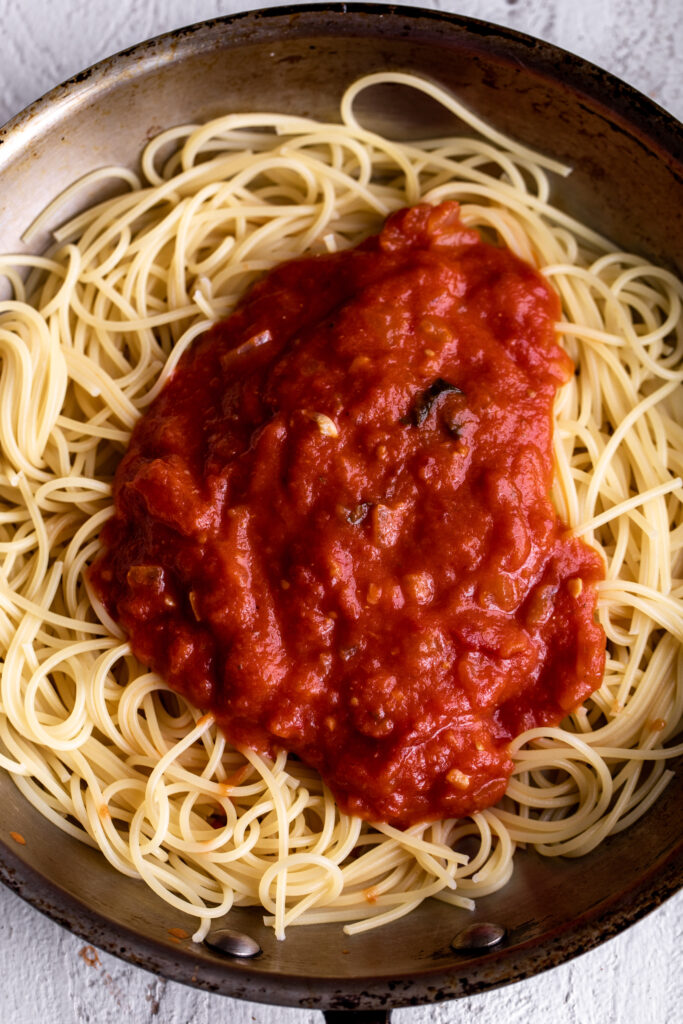
Tips and Tricks for This Recipe
How to Freeze Marinara Sauce
Marinara sauce freezes so I recommend doubling or tripling the recipe. To store, divide the sauce among resealable plastic bags then remove the air and freeze. I lay the bags of stock on a baking sheet until they are frozen so they can easily be stacked. I recommend labeling the bags with a sharpie with the name and date the sauce was made. Jars of the sauce can also be canned for long-term storage.
Substitutions/Swaps for this Recipe
- If you don’t have fresh basil or bay leaves you can substitute ½ teaspoon of dried basil and ½ teaspoon dried oregano in the recipe.
- If you like your sauce with a bit of spice, try adding ½ teaspoon of red pepper flakes.

Simple Marinara Sauce Recipe
Ingredients:
- 3 tablespoons extra-virgin olive oil
- 1 medium yellow onion, finely chopped
- 4 cloves garlic, minced
- 1 (28-ounce) can whole peeled tomatoes
- 1 (28-ounce) can diced tomatoes
- 2 bay leaves
- 3 tablespoons chopped fresh basil leaves
- Kosher salt, as needed
- Freshly ground black pepper, as needed
Instructions:
- Heat the olive oil in a large pot over medium heat. Add the onion and sauté, cooking until the onion is tender and translucent, about 6 minutes.
- Add the garlic and sauté until fragrant, about an additional 30 seconds.
- Add the tomatoes with their liquid, bay leaves, basil and ½ cup of water.
- Lower the heat to medium-low, let simmer and stir occasionally until the sauce thickens, about 30 minutes. Discard bay leaves and season to taste with salt and pepper.
- Serve as is or if you prefer a smoother sauce, take about 3 cups of the sauce, let it cool slightly then add to a blender. Pulse until smooth, about 30 seconds. Stir it back in with the rest of the sauce.
- Store the sauce refrigerated in an airtight container for up to 1 week, frozen or serve.
DID YOU MAKE THIS?
TAG ME ON INSTAGRAM TO BE FEATURED ON MY STORIES! @cookingwithcocktailrings

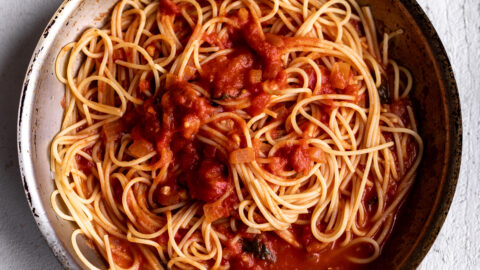
)
)
)
Thank you your recipe was a success.. but but considering we’re all different I had to add some sugar.. that’s my preference for all meat sauce is to have it on the slightly sweet side otherwise it taste like I just came out of a jar like Prego.. thank you again
Can’t wait to try it!